Maximizing Impact Through Actionable Insights
Digital marketing success hinges on connecting with the right audience at the right time. Targeted outreach is an indispensable tool in a marketer’s arsenal, paving the way for enhanced engagement and conversion rates. This fundamental principle is crucial because it ensures that marketing efforts are not broad and unfocused but precise and impactful.
At Bruck Marketing, where strategy and precision are paramount, we have honed in on a series of proven strategies to elevate your targeted outreach campaigns. This post will explore these strategies, offering you actionable insights to help you forge stronger connections and capitalize on potential opportunities.
Understanding Your Audience
A deep understanding of your audience is the cornerstone of any targeted outreach campaign. Who are they? What are their needs and pain points? How do they prefer to consume content? Answering these questions can help tailor your message to resonate with your intended recipients. Consider the following steps to gain insights:
- Conduct market research to aggregate data on your target demographics.
- Analyze past campaigns to identify trends and preferences.
- Utilize analytics tools to track user behavior and engagement.
- Audience Segmentation: Identifying specific segments within a broader audience allows marketers to tailor their messages more effectively. This can be based on demographics, psychographics, behavioral data, and other criteria.
Content That Connects
Content is the medium through which your message is conveyed, making it a critical component of targeted outreach. At Bruck Marketing, creating content with intention and clarity is key. Your content should inform and inspire your audience to take action. To achieve this:
- Align your content with the interests and needs of your target audience.
- Ensure consistency in your messaging across all platforms.
- Employ storytelling techniques to make your content more relatable and memorable.
Reaching out to the audience at the right time is critical. This could mean timing communications based on the customer journey stage, seasonal trends, or even the time of day when the audience is most active. Alongside timing, the context in which a message is delivered significantly impacts its effectiveness. Marketing messages should be contextually relevant to the audience’s current situation, whether they’re browsing social media, reading an email, or searching for information online.
Personalization at Scale
Personalization can significantly increase the effectiveness of your outreach. Addressing your audience by name or referencing their specific interests can create a more engaging and intimate experience. However, personalizing at scale can be challenging. Here are some strategies to personalize efficiently:
- Segment your audience into groups based on shared characteristics for tailored messaging.
- Use automation tools to deliver personalized messages without sacrificing efficiency.
Personalization fosters customer loyalty. When customers feel understood and valued, they are more likely to remain loyal to your brand. Loyal customers are also more inclined to refer your business to others, helping you expand your customer base.
Strategic Follow-Up
Following up with your audience can make the difference between a missed opportunity and a successful connection. A strategic follow-up plan ensures that you remain at the forefront of your audience’s mind without being intrusive. Consider these follow-up tactics:
- Set a schedule for follow-up communications to keep your brand relevant.
- Use a mix of communication channels, such as email, social media, and even direct mail.
- Provide additional value with each follow-up, such as exclusive content or special offers.
Tracking and Measuring Success
It’s difficult to gauge success and make informed adjustments without tracking the outcomes of your outreach efforts. Utilize Google Analytics and other measurement tools to monitor key performance indicators (KPIs) such as open rates, click-through rates, and conversion rates. This data will help refine your approach for future campaigns, ensuring continuous improvement and better results.
By tracking and analyzing metrics such as website traffic, click-through rates, conversion rates, and customer demographics, marketers can comprehensively understand their target audience, identify trends, and make data-driven decisions to enhance their marketing efforts. Data analytics in digital marketing enables marketers to personalize campaigns, improve targeting, allocate resources effectively, and continuously optimize their marketing initiatives for maximum impact and return on investment.
Tools and Techniques for Targeted Outreach
- Data Analytics: Understanding audience behavior and preferences through data analytics helps make informed decisions about who to target and when. Tools like Google Analytics, CRM systems, and social media insights are invaluable.
- Marketing Automation: Automation tools can help streamline and optimize targeted outreach efforts. They enable the delivery of personalized messages at scale, triggered by the audience’s specific actions or behaviors.
- A/B Testing: Continuous testing and optimization of marketing messages ensure that they are effective. A/B testing different versions of a message to see which one resonates more with the target audience can significantly improve engagement and conversion rates.
Conclusion
Targeted outreach is a dynamic and nuanced process that demands a well-thought-out strategy. By understanding your audience, creating compelling content, personalizing communication, following up strategically, and measuring your success, you can maximize the impact of your outreach efforts. Bruck Marketing is dedicated to collaborating with clients to navigate these strategies, crafting campaigns that reach and resonate with targeted leads. It’s time to transform your connections into valuable opportunities with precision and purpose.

